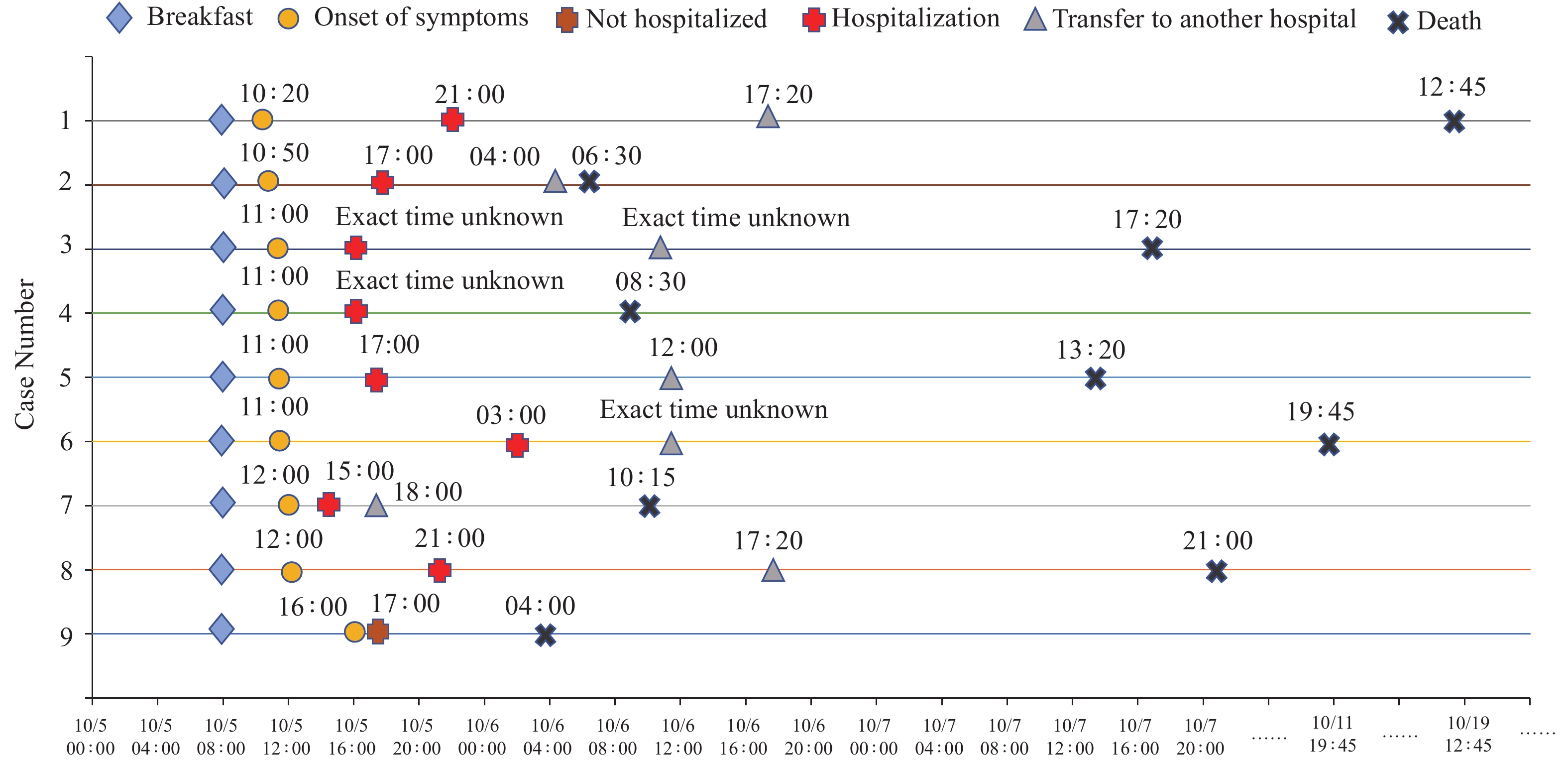2020 Vol. 2, No. 51
What is already known on this topic?
Poisoning incidents caused by bongkrekic acid (BA), one of the metabolites of Burkholderia gladioli pathovar cocovenenans (B. cocovenenans), have been reported in Indonesia, Mozambique, and China. The reported case fatality rates averaged 60%, 32%, and 26.5%, respectively. In China, B. cocovenenans is often called Pseudomonas cocovenenans subsp. farinofermentans.
What is added by this report?
In October 2020, 9 persons in Jidong County, Heilongjiang Province died after consuming a homemade fermented corn flour product — sour soup — with a case fatality rate of 100%. BA was detected in both food samples and biological samples with a content of 330 mg/kg and 3 mg/L, respectively. The doses of BA consumed by the cases were approximately 22–33 times the lethal dose in human.
What are the implications for public health practice?
The consumption of fermented corn flour products, deteriorated fresh tremella, or black fungus and metamorphic starch products may cause BA poisoning. Health education should be strengthened so that homemade-starch-fermented food should be avoided and foods that have been kept for a long time should not be consumed. Meanwhile, training and emergency capacity building for primary healthcare workers should be strengthened to provide timely diagnosis and response.
What is already known about this topic?
Existing manual deworming programs launched have made great progress in reducing the Echinococcus infection rate of domestic dogs, but significant challenges remain in scattered nomadic communities inhabiting the Tibetan Plateau. The low deworming frequency and low levels of coverage were responsible for the high infection rate of Echinococcus spp. among dogs.
What is added by this report?
Smart deworming collars controlled by a remote management system (RMS) was found to increase the deworming frequency and coverage and subsequently reduce the canine infection rates with Echinococcus spp.
What are the implications for public health practice?
As an innovative tool, smart deworming collars may drive the paradigm shift from manual deworming to smart deworming and stop the transmission of echinococcosis.
Health literacy involves knowledge, motivation, and competence to access, understand, appraise, and apply health information to make judgments and make decisions every day to maintain or improve quality of life. It is of great importance to the health and wellbeing of individuals, families, and society and plays a crucial role in noncommunicable disease (NCD) prevention and control. Recognizing that health literacy is a public health challenge in China, the Chinese government has been making great effort to address this issue. This paper presented a general overview of health literacy status in China with a focus on NCDs, described China’s challenges and practices in improving health literacy, and provided suggestions to decision makers, practitioners, and researchers to address the needs of health literacy in China.



 Subscribe for E-mail Alerts
Subscribe for E-mail Alerts CCDC Weekly RSS Feed
CCDC Weekly RSS Feed
